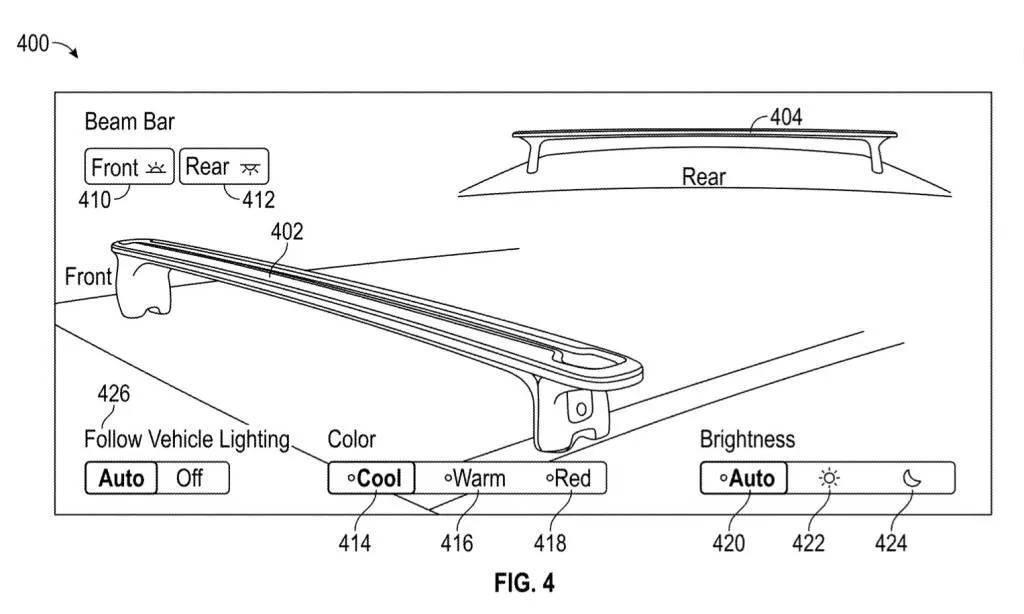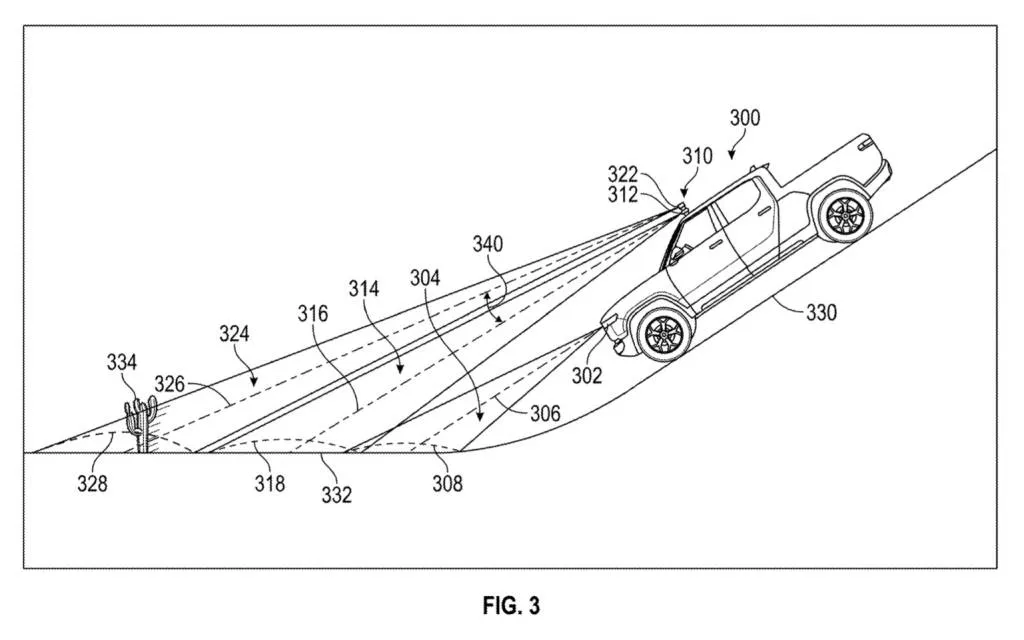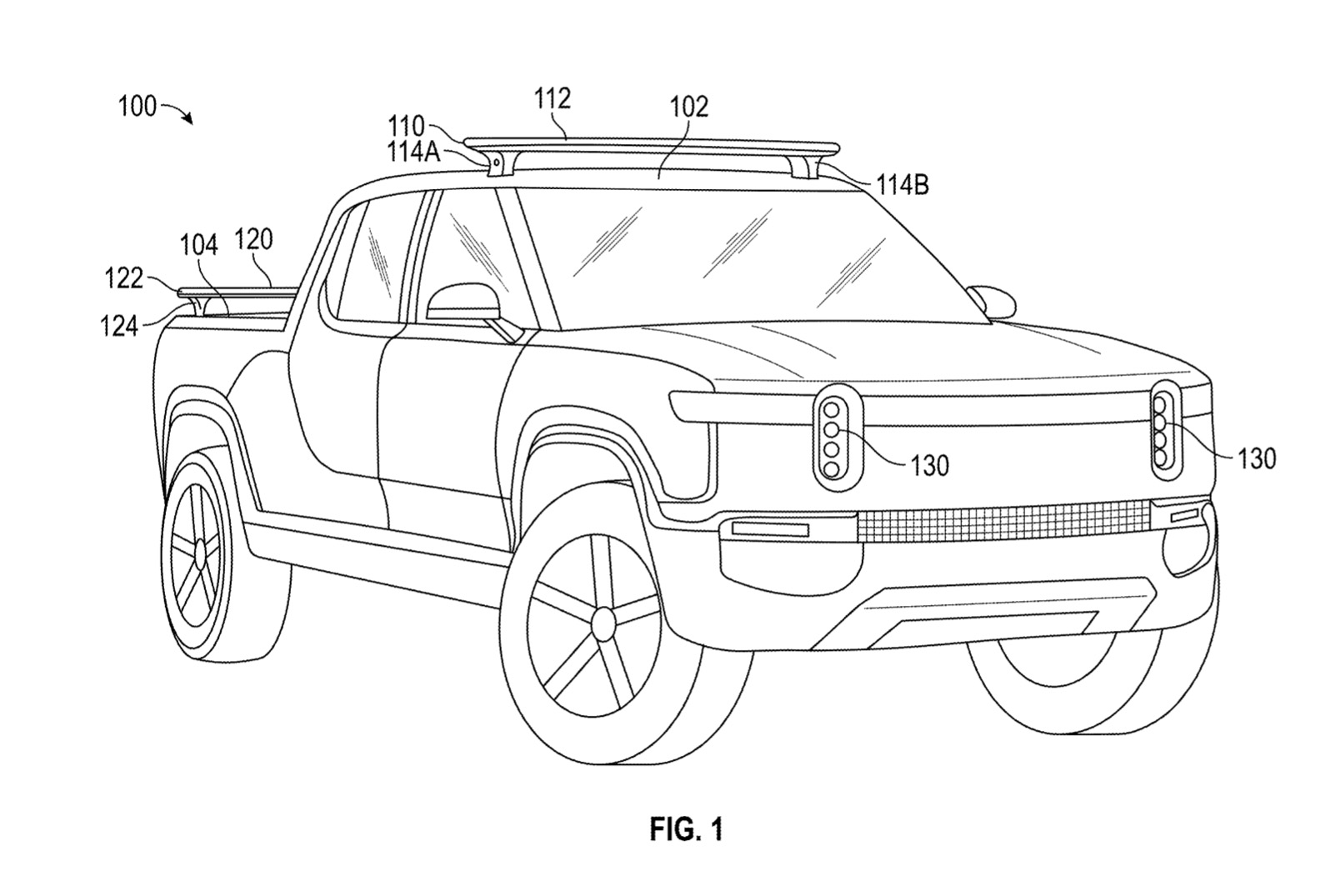Rivian has filed two patent applications for integrated lighting in the roof rails in its electric pickup trucks and SUVs.
The two applications show slightly different versions of a lighting system that would be part of the roof cross bars typically used to secure cargo. Accompanying drawings show pickup trucks and SUVs resembling the current Rivian R1T and R1S, respectively.


Rivian roof rail lighting system patent image (version one)
The first application—published by the United States Patent and Trademark Office (USPTO) on Jan. 11, and filed on Sep. 12, 2022—have fairly conventional looking cross bars with lights that can project in front of, alongside, and behind the vehicle. Cross bars would have a built-in electrical connection that allows the vehicle’s battery pack to power the lights.
These lights can be used for a variety of purposes, according to Rivian. Lights on the back of the rearmost cross bar could serve as extra brake lights, and lights at the ends of front or rear cross bars could be used as turn signals. Lights could also be keyed to a vehicle’s unlock sequence, similar to the way headlights and taillights temporarily illuminate on some vehicles when they’re unlocked.


Rivian roof rail lighting system patent image (version two)
The second application, which has the same publication and filing dates as the first, shows a different configuration for the lights. Here, they take the form of spotlights that specifically illuminate the area at the bottom of an incline. Lights would turn on automatically when the vehicle reaches a certain downhill angle, helping to provide better visibility ahead.
It’s unclear if we’ll see either form of Rivian’s roof rail lighting system on a production vehicle, but it wouldn’t be surprising to see a feature like this on a future update of Rivian’s R1 models. The automaker also plans to unveil the more affordable R2 series this year, although production isn’t scheduled to start until 2026.
